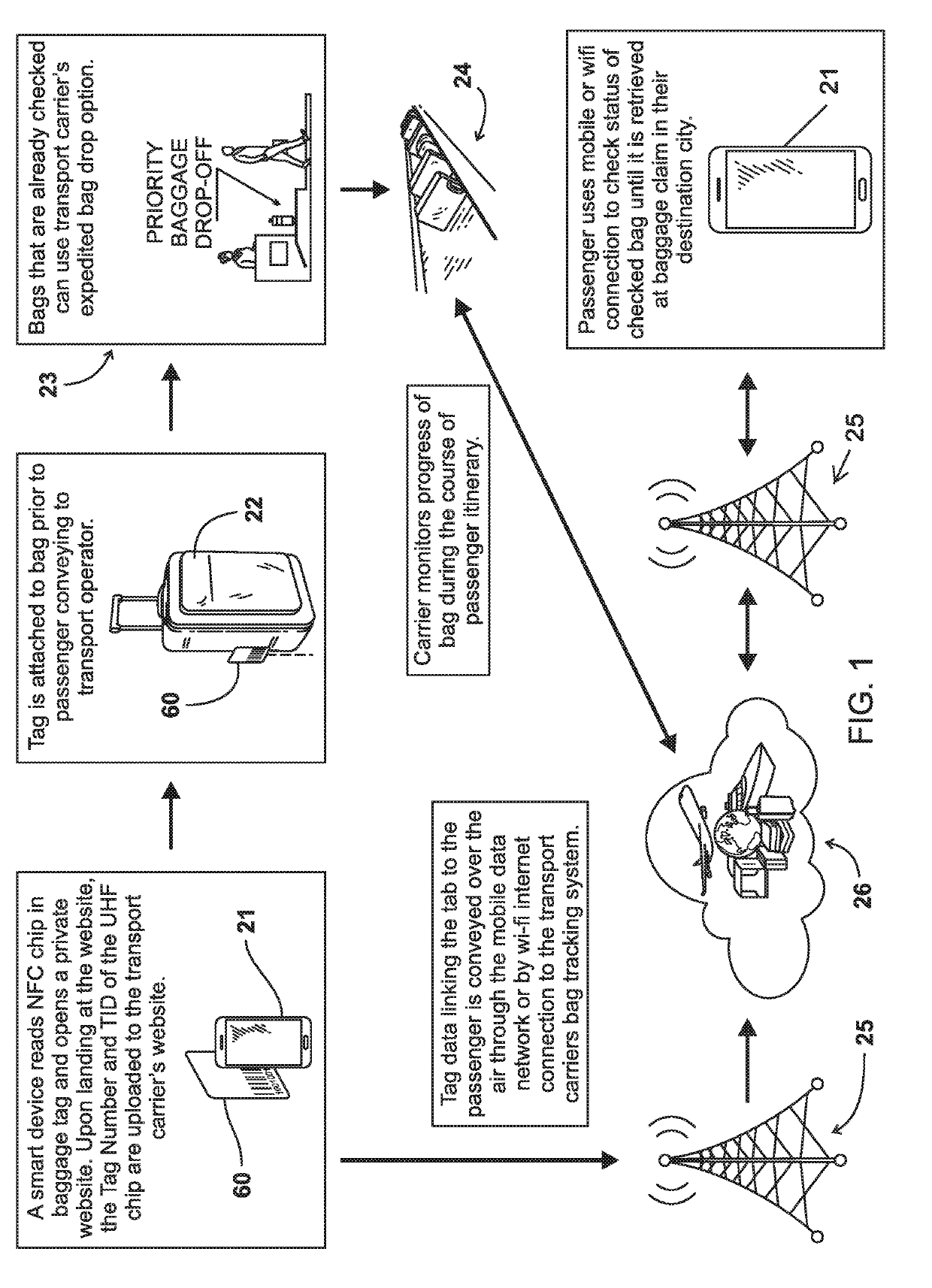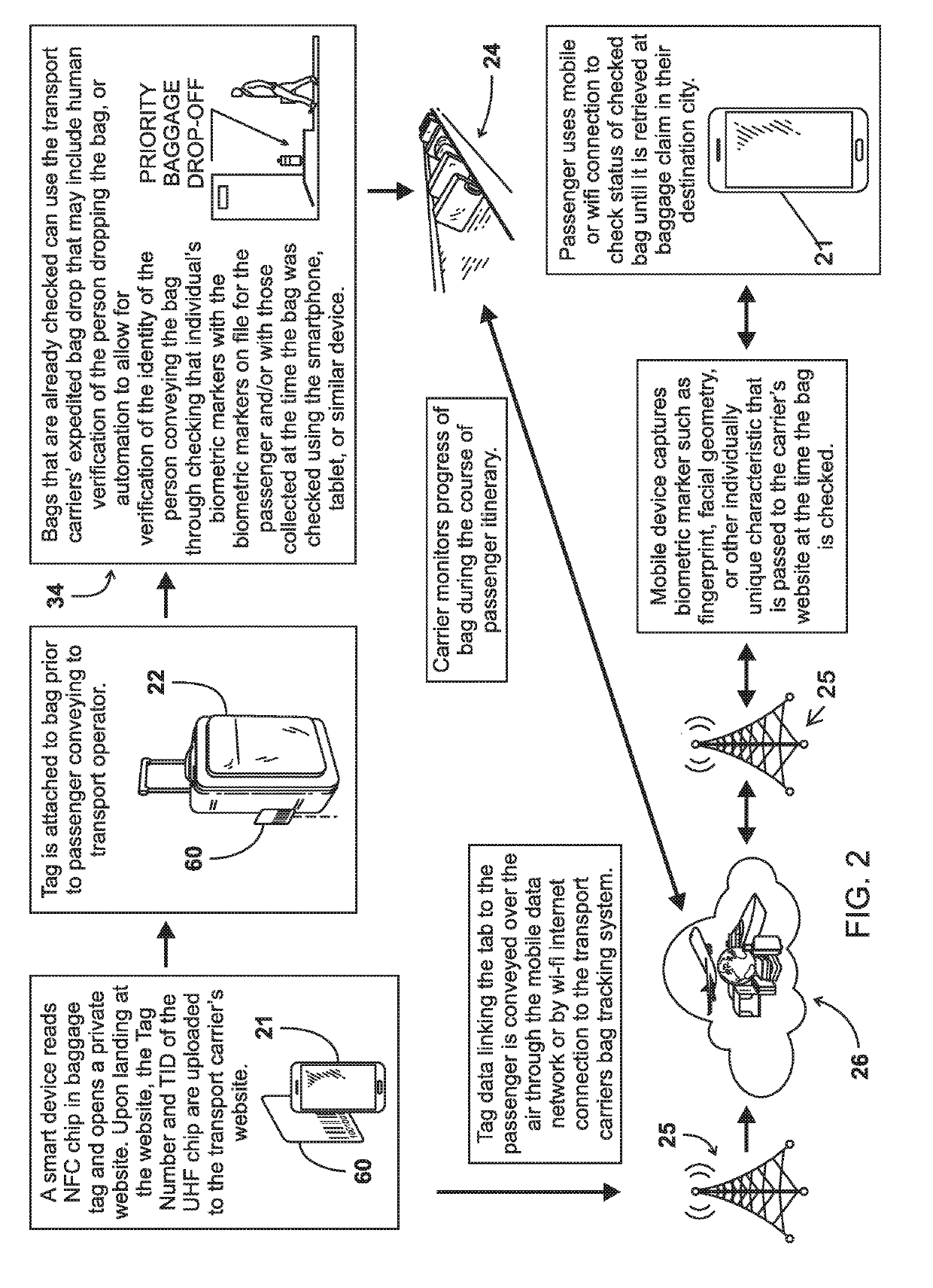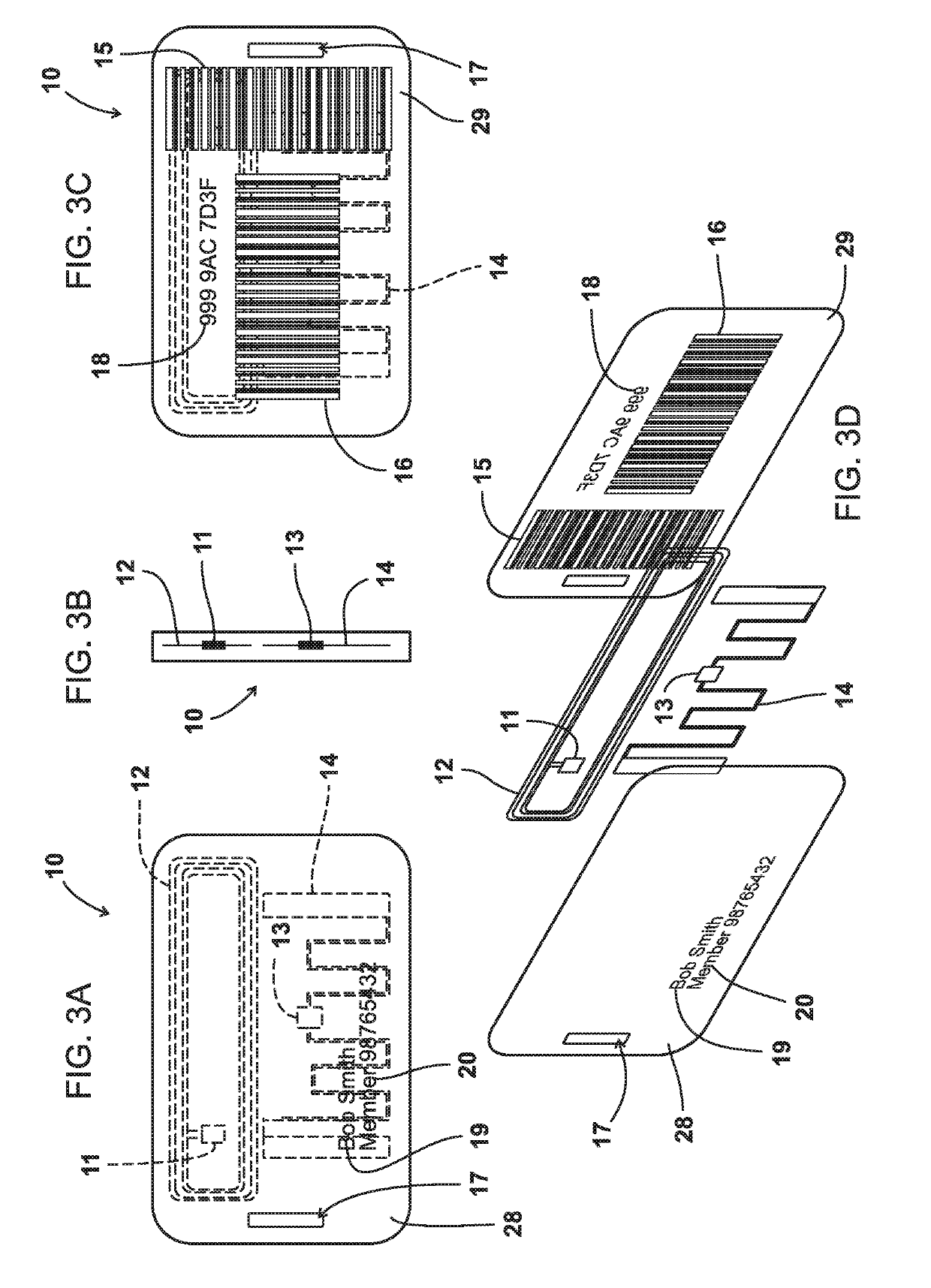Dual frequency nfc/rfid card for self service baggage check and method
a baggage check and dual-frequency technology, applied in the field of self-service passenger baggage check apparatus and system, can solve problems such as unpractical, system does not speed up the process of checking bags prior, and problems such as problems rather than solutions, and achieve the effects of speeding up the security verification of bag ownership, reducing labor, and speeding up verification
- Summary
- Abstract
- Description
- Claims
- Application Information
AI Technical Summary
Benefits of technology
Problems solved by technology
Method used
Image
Examples
Embodiment Construction
[0313]FIG. 1 illustrates a first preferred embodiment of a method and system of the present invention. FIG. 2 illustrates a second preferred embodiment of a method and system of the present invention. FIGS. 3A-3D illustrate a first preferred embodiment of a baggage tag or card that can be used in the method and system as shown in FIG. 1 or FIG. 2. FIGS. 4A-4D illustrate a second preferred embodiment of a baggage tag or card that can be used in the method and system as shown in FIG. 1 or 2. FIGS. 5A-5D illustrate a third preferred embodiment of a baggage tag or card that can be used in the method and system as shown in FIG. 1 or FIG. 2. FIGS. 6A-6D illustrate a fourth preferred embodiment of a baggage tag or card that can be used in the method and system as shown in FIG. 1 or FIG. 2. In FIGS. 3A-3D a first preferred embodiment of a baggage tag or card, designated by the numeral 10, is illustrated. Preferably, tag or card 10 is made from rigid plastic conforming to ISO 7810 ID-Type 1 ...
PUM
 Login to View More
Login to View More Abstract
Description
Claims
Application Information
 Login to View More
Login to View More - R&D
- Intellectual Property
- Life Sciences
- Materials
- Tech Scout
- Unparalleled Data Quality
- Higher Quality Content
- 60% Fewer Hallucinations
Browse by: Latest US Patents, China's latest patents, Technical Efficacy Thesaurus, Application Domain, Technology Topic, Popular Technical Reports.
© 2025 PatSnap. All rights reserved.Legal|Privacy policy|Modern Slavery Act Transparency Statement|Sitemap|About US| Contact US: help@patsnap.com



